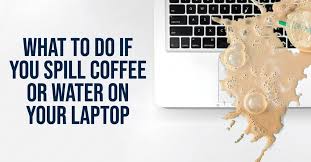
Accidents happen, and one of the most common mishaps is spilling liquid on electronic devices like smartphones, tablets, or laptops. Knowing what to do in such a situation can make all the difference in preventing permanent damage to your device. In this blog post, we’ll discuss the essential steps to take when water spills on your device, helping you minimize potential damage and increase the chances of saving your device.
1. Act Quickly:
The moment water spills on your device, time is of the essence. Act quickly to minimize water damage by immediately removing the device from the water source and turning it off, if possible. The longer the device remains submerged or powered on, the greater the risk of internal damage.
2. Dry the Surface:
After removing the device from the water, use a clean, dry cloth to gently pat the surface and absorb as much water as possible. Avoid rubbing the device, as this can spread water further into internal components. Pay particular attention to ports, buttons, and crevices where water may have seeped in.
3. Remove External Accessories:
If your device has removable accessories such as cases, covers, or batteries, remove them immediately. This will allow air to circulate around the device and aid in the drying process. Additionally, remove any SIM cards, memory cards, or other removable components to prevent water damage to these items.
4. Use Rice or Silica Gel Packs:
To absorb moisture from the device, place it in a container filled with uncooked rice or silica gel packs. These desiccants can help draw out moisture from the device over time. Be sure to leave the device in the container for at least 24-48 hours to ensure thorough drying.
5. Do Not Use artificial Heat:
While it may be tempting to use heat sources like hair dryers or heaters to speed up the drying process, avoid doing so. Exposing your device to heat can cause further damage by melting internal components or warping the device’s casing. Instead, opt for natural air drying methods. This may include spreading out the “mother board” in the sun (but ensure the screen is protected from resting on hot layers). It is advisable to let the device be exposed to the natural rays of sun heat for up to 24hrs without connecting the device battery or any other power source
6. Seek Professional Help:
If you’re unable to dry the device on your own or suspect significant water damage, seek professional help from a reputable repair service. Professional technicians have the expertise and tools to assess the extent of the damage and perform necessary repairs to restore your device.
How can I prevent water damage to my electronic devices?
Preventing water damage to your electronic devices starts with proactive measures. Here are some tips to help you avoid water-related accidents:
- Keep liquids away: Be mindful of where you place your drinks, and avoid placing them near electronic devices.
- Use protective cases: Invest in waterproof or water-resistant cases for your devices, especially if you use them in environments where water exposure is likely.
- Be cautious in humid environments: Humidity can lead to moisture buildup, increasing the risk of water damage. Take extra precautions when using your devices in humid conditions.
- Handle with care: Always handle your devices with care, and avoid exposing them to water or moisture unnecessarily.
What are the common mistakes to avoid when attempting to salvage a device after water damage?
Answer: When dealing with water-damaged devices, it’s important to avoid common mistakes that can worsen the situation. Some mistakes to avoid include:
- Turning on the device: Do not attempt to power on the device immediately after a water spill, as this can cause short circuits and further damage.
- Using heat sources: Avoid using heat sources like hair dryers or heaters to dry the device, as excessive heat can damage internal components.
- Waiting too long to dry: Act quickly to dry the device after a water spill, as prolonged exposure to moisture can lead to corrosion and irreversible damage.
- Disassembling the device: Unless you have experience with device repair, avoid disassembling the device yourself, as this can cause further damage and void warranties.
Conclusion:
Water spills on electronic devices can be stressful, but knowing how to respond can help mitigate damage and increase the chances of saving your device. By acting quickly, drying the surface, removing external accessories, avoiding heat, using desiccants, and seeking professional help when needed, you can give your device the best chance of recovery. Remember, the key is to act swiftly and methodically to minimize water damage and preserve your device’s functionality.










